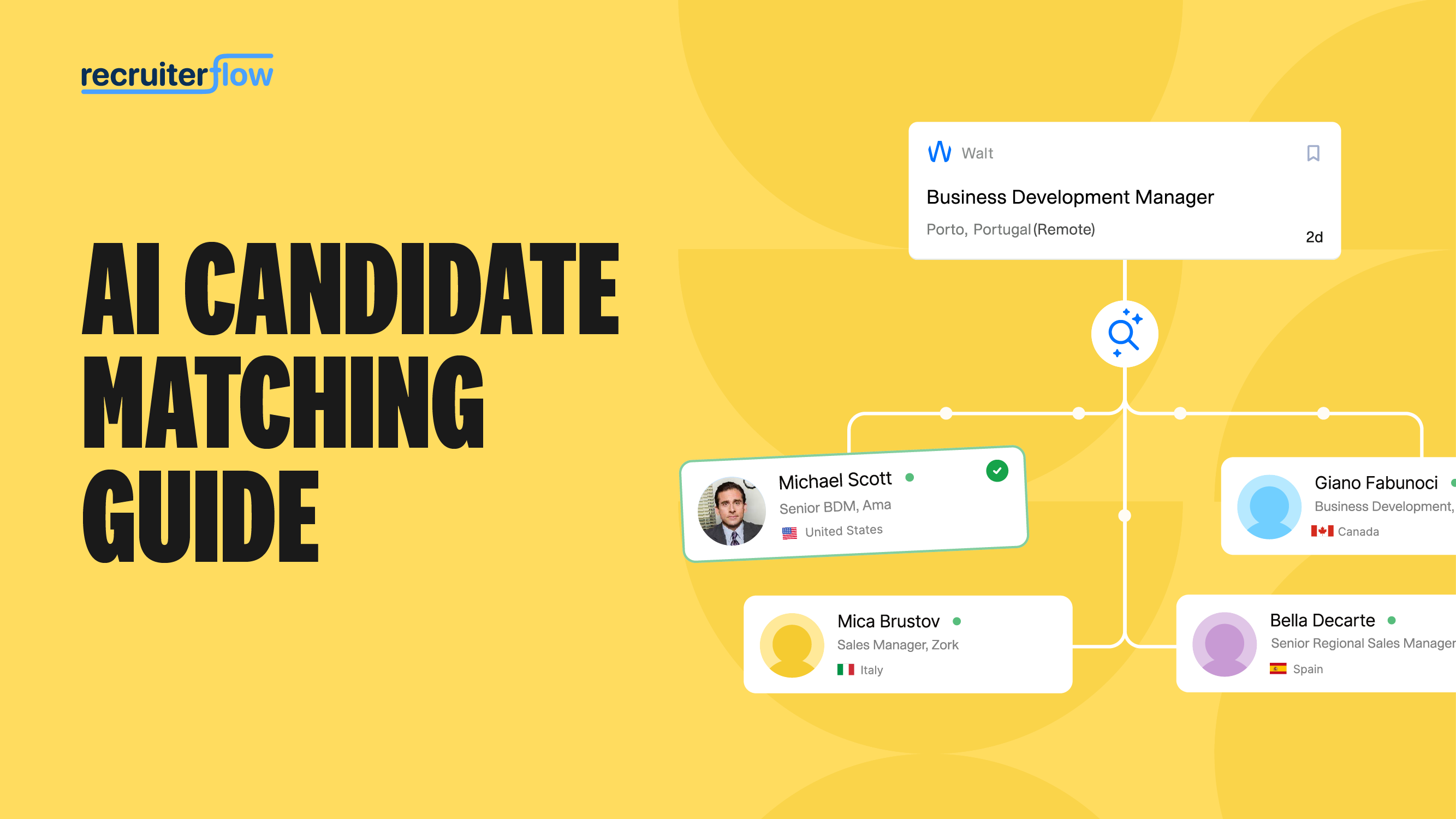
The complete guide to hiring for startups

Hiring is every founder’s biggest challenge. A great team can be your competitive advantage but it’s not an easy task to put together such a team. The most common challenges range from “Should I hire for an acute short-term need or long-term strategy?” to “We don’t have enough resources. How do we still find and hire amazing talent!” If you are deliberating on these questions, this guide is for you.
Laying the ground rules
Be painstakingly honest with your candidates
Even if you are on a hockey stick curve, no startup is without its own set of challenges. Painting an unrealistically rosy picture of the candidate doesn’t help anyone. Be upfront and honest about communicating these problems with the candidate. Overselling can create expectations that you can’t match. This is a lose-lose for all parties.
This doesn’t mean you don’t sell the vision and achievements to the candidate. This is generally a very good idea to get the candidate invested in the vision.
Be decisive, Aggressive, and Fast
Speed is your only weapon against your bigger competitors. A great candidate will likely have a few options to choose from. It’s going to take something special to wrestle with the bigger players. Candidates appreciate decisive founders and your chances of recruiting them to increase exponentially.
Attitude matters as much as Aptitude, if not more
Filter for attitude, as much as you would for altitude. There are going to be lots of ups and downs and tectonic changes in your journey. You need to be sure that the person you hire embraces this change quickly and adapts to them.
Long-term over short-term compromise
As a founder, you will always have mountainous challenges looming over your head. These challenges make us look for quick wins. While we can use a quick win every once in a while, don’t look for quick wins when you are recruiting. A quick suboptimal hire will help you complete a critical project but hurt you in the longer run.
Hiring for the long term works best for everyone involved. There are fewer mistakes and you stay focused on the mission.
Know what you want
Founders often make the mistake of hiring too early and too fast. Scaling a team without scaling value is a dangerous proposition. It severely inhibits your ability to experiment with your go-to-market and product. Yes, you read that right. A larger team doesn’t mean you will be able to launch experiments faster.
It is important to understand exactly do you need before you start hiring. Create a candidate persona (A great template over here. Also read the guide to creating candidate personas.) that you have to create before you open the job. A candidate persona helps you expose gaps in your thought process and force you to think hard about them. It helps you bring intellectual honesty to your recruiting. Consider yourself ready to go when you can create a persona profile without second thoughts.
I also love this tweet storm by Sean Kelley listing out what he looks for when he recruits developers. You can see the tweet thread here.
Recently a younger member of our team asked me: “What do you look for in a software engineer?”. He told me my answers surprised him, and weren’t like other answers he got, but I’ve ended up having this same conversation with many people at different levels the past few days…
— Sean Kelly (@StabbyCutyou) May 31, 2018
Now that you have ground rules, let’s tackle the more practical aspects of recruiting. We don’t have a recruiter, how can I do this myself?
Recruiting without a full-time recruiter onboard
Not having a full-time recruiter on board is not always a disadvantage. As a founder in the early stages, no one else can tell your story better than yourself! Your zeal to solve a problem is part of the pitch which can not come from a Recruiter. This is not to say that Recruiters are not immensely useful, but you gotta work with what you have. Here are a few ways you can work around this (dis)advantage.
1) Actively ask for referrals
Asking for referrals in your and your team’s social circles. In most cases, early-stage hires come from your immediate social circles. Have a friend who is a great developer? Ask for her help. If she isn’t ready to join you, she will know other amazing developers that you can target.
Here are some great employee referral program ideas that you can use.
2)Work with freelance sourcers
If you don’t have a large enough budget to work with top-notch recruiters, work with great sourcers. Sourcers will help you find the right candidate and devise a strategy to reach out to them. You take over the screening, coordination, selling, and closing part of the job.
Here’s what defines a great sourcer for you.
- Your culture and its challenges
- Deep industry knowledge
- A firm command over the language your target candidates speak
- Boolean sourcing and X-ray searching
- Basic coding ability(Added bonus)
One of the best places to find such freelance sourcers is Upwork. Upwork has hundreds of sourcers with varying experience, skill levels, and fees.
Some of our customers have had astounding results using this methodology. They were able to get engineers from the likes of Amazon and google within a month with this strategy.
How to work with freelance sourcers?
Set up an outbound cold email campaign that gets sent out from your email id and gets sourcers to add prospects to that campaign. Your cold email outreach needs to be personal and enticing enough for someone to respond to. To understand how you can leverage email sequences to triple your response rates – head here.
3) Set time in calendars to source internally
If working with freelance sourcers is not a prospect, sourcing yourself works great. Get a basic understanding of Boolean searching and X-ray searching. Sourcing is a time-consuming and exhausting prospect. What has helped me is setting a time apart on my calendar to source candidates. Also, enlist others in your team to set a time to source candidates. Setting apart 30 minutes every day will help you get to the right candidates in two weeks tops!
4) Post on niche job boards and online communities
This is an iffy strategy. The chances of you finding your next hire with mainstream job boards are fairly slim. You have a much better chance with niche communities and meetup groups.
How to do cold outreach to passive candidates
The most critical part of the sourcing process is your cadence of cold outreach to candidates. There are data-driven best practices for cold emails to candidates. Here is an excerpt to help you.
-
Personalize the crap out of your emails
Nobody hates a generic recruitment email that has no idea what you are asking for. If the reader can figure out this email is sent out to hundreds of others, there is a slim chance you will get a response.
Personalization helps you make an instant connection and gets far better responses. When I say personalize, I don’t just mean write Hey <first-name>. That’s old school. You need to do better. Maybe comment on their latest project or compliment them on their latest blog post. This way, you can expect half the candidates you reach out to, to come back to you with a response.
-
Be brief and direct
Yes, you are passionate but no one likes ramblers. Brevity is the soul of a good cold email. Once you’ve delivered your pitch, deliver the ask. Don’t ask for their resumes or apply on the link(You are way past that when you chose to email them.) Ask them if they are up for a call/coffee! Something very easy to say yes to.
Recommended read:
Recruiting cold email templates that work
How fusion charts assembled a crew of rockstars with proactive recruiting
Structuring Interview Process
Since you don’t have a lot of stakeholders, you don’t need to create an elaborate recruiting process. You will still need to steer clear of these biases that Agata has listed in her hiring guide.
What should you be looking for?
The most important leading indicator of how good someone is their track record. You want someone who has consistently overcome challenges and outperformed their peers.
How do you identify high performers?
- They have a history of consecutive promotions
- They have a track record of tackling more challenging projects compared to their peers.
- They’ve picked up new skills along the way to make sure they tackle the challenge presented to them.
Negotiating compensation and benefits
A startup typically has recently had an MVP launch typically has three levers in its compensation package. Cash, Stock Options, and Benefits. Here’s how to structure them.
Cash compensation
Rule of thumb: Hire people who can bring 10x the value of their cash compensation to your company. This is a ratio that gives you enough room to grow exponentially and make a few mistakes along the way.
Competing with bigger companies on cash is tough and it’s hard to outplay them. You have two levers left to compete with them for top talent.
Stock options
Accounting for stock options is a fundamental task for startups, carrying significant implications for both financial reporting and talent acquisition. These equity incentives, vital for attracting skilled employees in a competitive landscape, necessitate meticulous valuation and proper accounting to ensure accurate representation on financial statements.
The mistake most founders make is not creating a viable and scalable ESOP pool early enough. ESOP is a great way to align the upside for your early team to the strategic goals in the long term. For early employees, their options should be worth 40-50% of their cash compensation. So, if you are paying someone 100k in cash and allowances, keep their options anywhere from 40k to 50k. This is of course true for early hires. As you grow and have more cash at hand, you can lower the equity compensation and increase the cash component.
Also, read Recruitment Process Framework for Startups
Here’s a rough rule of thumb that I stick to and works pretty okay with most people.
First 10 hires: 40-50% of cash compensation
10-20 hires: 30-40% of cash compensation
20-30 hires: 25-30% of cash compensation
Benefits
The biggest one – Remote. Read this Twitter thread by DHH.
The answer is REMOTE! So many amazing people who have no interest in moving to San Francisco, regardless of the money. The word is literally full of them. https://t.co/3QSOosh8Vn
— DHH (@dhh) June 28, 2018
Remote teams are one of the biggest change in the workplace that we have seen in this century and large companies are oblivious to it. Take this opportunity and create a distributed team. Tools like Slack, Zoom, and Asana have made it incredibly easy for us to live thousands of miles apart and still work together in perfect cohesion.
I love remote teams because it also compels you to plan ahead and improve the efficiency of the communication. These virtues can become your competitive advantage. Also, most importantly, it removes the geographical barrier to the talent pool available to you. It’s an incredible trend that democratizes access to opportunity on a global scale.
Some other recommended reads on hiring for startups:
Creating a brand to attract A-players
How to hire more women in tech sales
Recruitment





Manan Shah